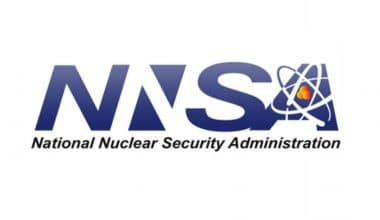As an international student, there are certain laws you must heed to if you must study abroad.
In order to help you navigate the international student process, this article spells out the many ICE immigration laws for international students.
People suspected of unlawfully entering the US face a lengthy judicial process that could result in deportation or release. An arrest is often the first step in the procedure. Individuals suspected of illegally entering the United States might be apprehended by local or federal law enforcement and then transferred to the custody of US Immigration and Customs Enforcement.
What Is ICE?
The U.S Immigration and Customs Enforcement(ICE) was created in 2003 when the Bush administration reorganized a number of federal agencies in response to the 11 September 2001 terrorist attacks and placed them under the brand new Department of Homeland Security. ICE, which now employs over 20,000 people, is one of three agencies that absorbed and assumed the functions of the now-defunct Immigration and Naturalization Service and the United States Customs Service.
The entity in charge of family separations at the US border is not ICE. ICE is not in charge of border patrol or security in the United States; that is the responsibility of the Customs and Border Protection Agency (CBP). CBP personnel are in charge of enforcing the Trump administration’s “zero tolerance” policy, which includes detaining migrants and asylum seekers at the border and separating undocumented families.
The U.S Immigration and Customs Enforcement is primarily responsible for what it refers to as Enforcement and Removal Operations, which entails locating, detaining, and deporting undocumented immigrants who have already crossed the border and are living in the United States.
YOU MAY WANT TO SEE: Best Places To Study In New York
Operational Divisions Within ICE
There are two main operational focus areas within the ICE agency;
1. Enforcement and Removal (ERO)
This division is in charge of primary enforcement matters involving non-citizens in the United States, such as apprehending those who are unlawfully present or have broken US law, with a special focus on criminals and gang members, as well as those who have re-entered the country after being deported previously.
It has the authority to hold non-citizens in specific circumstances (especially when they are released from prison following a criminal conviction) and to carry out removal orders issued by immigration courts.
2. Homeland Security Investigations (HSI)
HSI is the Department of Homeland Security’s investigation arm, with offices in a number of U.S. cities and around the world. It is in charge of global criminal investigations with the goal of safeguarding US national security. HSI assists in apprehending and punishing individuals and criminal groups who attempt to circumvent US customs and immigration rules and procedures.
Financial crimes, cybercrime, child exploitation and sex tourism, illegal weapons trade, export violations, commercial fraud, intellectual property theft, human smuggling and trafficking, narcotics smuggling and trafficking, identity and benefit fraud, human rights violations, and transnational gangs are among the crimes that the HSI investigates.
What Is Immigration Law?
The national statutes, regulations, and legal precedents that govern immigration into and deportation from a country are known as immigration law. Despite the fact that they can be confusing, it is distinct from other difficulties such as naturalization and citizenship.
Internal rights such as length of residence, freedom of mobility, and involvement in trade or governance are normally governed by rules that govern both admission and exit rights.
RELATED POST: Tips On How to Apply for Admission and Visa to Study in Canada
Who Are F-1 and M-1 Non-immigrants
The nonimmigrant classifications F-1 and M-1 are listed on a student’s Form I-20, “Certificate of Eligibility for Nonimmigrant Student Status.” It also influences the sort of visa a prospective student will receive from the US Department of State, as well as the rules they must follow after they arrive in the US.
F-1 and M-1 students both came to the United States with the same primary goal in mind: to finish a program of study approved by the Student and Exchange Visitor Program (SEVP). F-1 students, on the other hand, attend more traditional academic programs, and M-1 students attend vocational programs.
Because these two sorts of programs are so dissimilar, the types of perks available to international students and the length of time they can stay in the country change depending on whether they are F-1 or M-1 students. Additionally, F-1 and M-1 students must take separate steps to ensure that their status is maintained throughout their stay. An F-1 student, for example, is entitled to annual vacation, whereas an M-1 student is not.
SEE ALSO: How Long Does a Student Visa Last & How can I Renew?
What Is SEVP?
Many acronyms will be used to designate US government entities and programs involved in the international student procedure. SEVP stands for Student and Exchange Visitor Program.
SEVP supervises F and M students and their dependents while in the United States to ensure that laws and regulations are followed by international students. The initiative also certifies schools so that F or M students can enroll. International students studying in the United States can only attend SEVP-certified schools. Schools must demonstrate that they are operational, meaning that they have the necessary facilities and instructors and that they are currently conducting courses, before requesting SEVP certification.
The Student and Exchange Visitor Information System is also managed by SEVP. SEVIS is an internet-based system that holds information on international students and the institutions that enroll them. SEVP also employs it to assist in the monitoring of children and schools for compliance with US legislation.
READ ALSO: Work and Study: How Can Students Still Perform Well Academically?
What Is SEVIS?
The Student and Exchange Visitor Information System (SEVIS) is a web-based system used by the United States Department of Homeland Security (DHS) to keep track of:
- Schools that have been approved by the Student and Exchange Visitor Program (SEVP).
- Students on F-1 and M-1 visas studying in the United States (and their F-2 and M-2 dependents).
- Exchange Visitor Program sponsors who have been designated by the US Department of State.
- Participants in the J-1 Visa Exchange Visitor Program (and their J-2 dependents).
SEVP manages SEVIS on behalf of DHS. The system is an important part of SEVP’s duty to protect national security while facilitating the lawful entry and stay of the over one million F, M, and J nonimmigrants who come to the US for educational and cultural exchange programs.
SEE ALSO: 26+ MBA Full Scholarships for International Students
What Is The Purpose Of SEVIS?
Nonimmigrant students and exchange visits are tracked and monitored by SEVIS. Foreign students may be admitted to the United States with the appropriate F or M nonimmigrant status if they are approved by a SEVP-certified school. Exchange visitors may be admitted to the United States with J nonimmigrant status if they are accepted for participation in a Department of State-verified exchange visitor program. SEVIS keeps track of these nonimmigrant admissions and their continuous participation in these educational programs. It also allows SEVP to ensure that schools and exchange visitor programs are properly reporting and retaining records, assuring data currency and integrity. SEVIS also enables the identification of students and exchange visitors who have violated their student or exchange visitor status so that appropriate action can be taken (i.e., denial of admission, denial of benefits, or removal from the United States).
SEVP-CERTIFIED SCHOOLS AND SEVIS
Schools in the United States apply for SEVP certification by submitting their initial Form I-17, “Petition for Approval of School for Attendance by Nonimmigrant Student,” through SEVIS. If SEVP approves the school’s Form I-17 and certifies it, the school can begin issuing Forms I-20, “Certificate of Eligibility for Nonimmigrant Student Status,” to nonimmigrant F and M students and their families.
SEVIS is used by principal-approved school officials to update their school’s Form I-17 and apply for SEVP renewal every two years once they have been certified. SEVIS is also used by approved school authorities at SEVP-certified schools to:
- Meet the school’s legal reporting requirements for student addresses, courses of study, attendance, employment, and adherence to the F and M student status stipulations.
- Transfer SEVIS records for F and M students to other institutions.
ICE Immigration Laws For International Students
Here’s an outline of the ICE immigration laws for international students;
- Nonimmigrant F-1 and M-1 students who attend completely online colleges are not permitted to take a full course load and remain in the United States. The US Department of State will not provide visas to students registered in fully online institutions and/or programs for the fall semester, and US Customs and Border Protection will not allow these students to enter the country. Active students enrolled in such programs who are currently in the United States must leave the country or take other steps, such as transferring to a school that offers in-person education, to maintain their legal status. If they do not comply, they may suffer immigration penalties, including the beginning of removal procedures.
- Existing federal laws apply to nonimmigrant F-1 students who attend colleges that offer regular in-person classes. A maximum of one class or three credit hours may be taken online by eligible F students.
- Nonimmigrant F-1 students who attend schools that use a hybrid model (online and in-person classes) will be able to take more than one class or three credit hours online. These schools must certify to SEVP via Form I-20, “Certificate of Eligibility for Nonimmigrant Student Status,” that the program is not entirely online, that the student is not taking an entirely online course load this semester, and that the student is taking the minimum number of online classes necessary to make normal progress in their degree program. F-1 students in English language training programs and M-1 students seeking vocational degrees, who are not permitted to enroll in any online courses, are excluded from the following exclusions.
According to the Department of Homeland Security, there are approximately 1 million international students with valid visas in the United States. More than 80,000 people hailing from the Middle East.
Frequently Asked Questions
The acronym ICE represents The United States Immigration and Customs Enforcement Organization. It is a federal law enforcement agency that is part of the United States Department of Homeland Security.
Immigration law refers to the national statutes, regulations, and precedents that control immigration into and deportation from a country.
SEVP stands for Student and Exchange Visitor Program, which ensures that government agencies have crucial information on nonimmigrant students and exchange visitors.
The Student and Exchange Visitor Information System (SEVIS) is a web-based system used by the United States Department of Homeland Security
Conclusion
The mission of ICE is to protect America from cross-border crime and illegal immigration, both of which endanger national security and public safety. This mission is carried out by enforcing over 400 federal statutes, with a focus on immigration enforcement and combating transnational crime.





